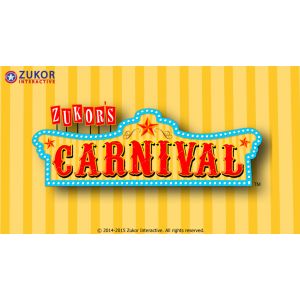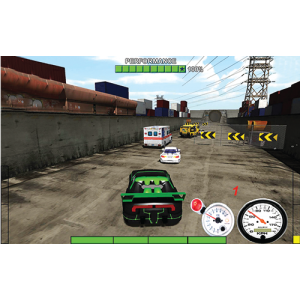We use cookies to make your experience better. To comply with the new e-Privacy directive, we need to ask for your consent to set the cookies. Learn more.
Software
- HRV Suite for Biograph InfinitiTeaching your clients to practice slow regular breathing exercises as often as possible, 10 to 20 minutes a day, will help them learn important self-regulation skills and maintain higher levels of heart rate variability. Learn More$270.00
- Zukor's Carnival - 10 High Quality Games in OneZukor's Carnival is not a single game, but rather ten games in one. The games are based upon the simple, classic games featured in carnivals, state fairs and amusement parks. Since carnival games are familiar across all age groups and cultures, Zukor’s Carnival has a broad appeal that makes it useful for all ages of men, women and children around the world. One license per computer. Learn More$495.00
- ProComp Infiniti Slow Cortical Potential Suite for v6.0The Slow Cortical Potential (SCP) suite is designed to help clinicians do specialized brainwave biofeedback using slow cortical potentials and implements a training protocol defined by pioneering researcher Ute Strehl at the University of Tubingen in Germany*. Learn More$355.00
- Zukor's Drive Game - Clinical VersionZukor's Drive is an advanced feedback game which offers game play from very relaxed to extremely intense, or any point in between. Learn More$495.00
- Zukor's Drive Game - Peak Performance UpgradeZukor's Drive Peak Performance Upgrade features additional more intense driving modes (chase, race and others), more chaotic tracks and more extreme vehicles. It can also be used to add variety to Clinical Version. Requires Clinical Version purchase. Learn More$495.00
- Peak Performance Suite for Biograph InfinitiThe Peak Performance Suite is a complete array of psychophysiological tools designed to help athletes, soldiers, business leaders and artists improve their performance. Learn More$355.00
- Synergy Solution SuiteThe Synergy Solution Suite software uses eVu TPS finger sensors (not included) to access each user’s heart rate variability, arousal, and temperature. Learn More$355.00
- Virtual Reality for CygnetThe Virtual Reality Neurofeedback Animation combines state-of-the-art virtual reality technology with the Neurofeedback application. The virtual worlds simulated in this feedback animation provides an unprecedented audio-visual neurofeedback experience to the patients. Learn More$870.00
- qEEG 100 Certificate of Exam CompletionOnce you have completed qEEG100, you may purchase a Certificate of Exam Completion, which will provide 45 hours of BCIA didactic credit. Learn More$150.00
- Z-Score Mini-Suite for Biograph Infiniti 6.0The Z-Score 6 suite will allow the user to perform z-score assessment and training within two ways: using the z-score value itself, or using a metric, called the z-score index, which is indicative of the state of a group of z-scores. Learn More$355.00











